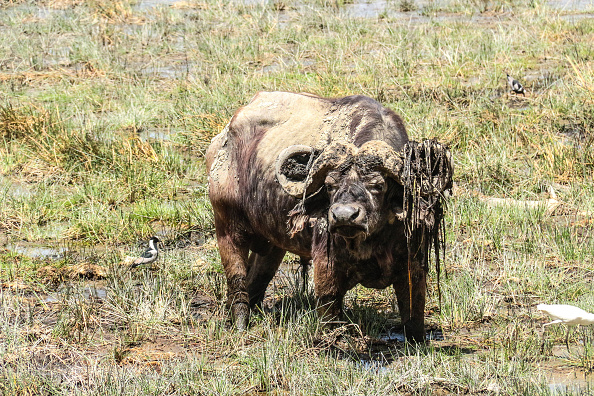
KWS contains anthrax outbreak at Kenya’s national park

More than ten buffaloes have been reported dead as a result of an anthrax outbreak. Anthrax is an infectious disease that affects cattle and wild game, humans can become infected through contact with an infected animal. A Park official has blamed current dry weather for the outbreak; at risk of infection is the near threatened Southern white rhinoceros. (Photo by James Wakibia/SOPA Images/LightRocket via Getty Images)
An anthrax outbreak that affected Kenya’s Lake Nakuru National Park is over and the last buffalo death was recorded on May 10, the country’s wildlife conservation agency said on Saturday.
John Waweru, director general of Kenya Wildlife Service (KWS), said in a statement that the total mortalities to date are 145 buffaloes representing 3.54 percent of the estimated population of 4,100 buffaloes in Lake Nakuru National Park.
“Our partnership with the local administration and Department of Public Health as well as Directorate of Veterinary Services to educate the local communities about anthrax and our surveillance and monitoring efforts have paid off,” Waweru said.
Lake Nakuru National Park which is about 160 km northwest of the Kenya’s capital city Nairobi covers an area of 188 square km and is an important ecosystem supporting high diversity of waterfowl, large mammal and floral species.
“It was set up as the first rhino sanctuary in Kenya and has been a successful breeding habitat. The park hosts a number of threatened mammal species, including lion, leopard and the Rothschild giraffe. Five globally threatened bird species are also found in the park,” he added.
He noted that the park management would continue with the monitoring and will report any suspicious deaths for urgent action by veterinary authorities.
The KWS official said that management would also undertake other long-term measures to mitigate such disease outbreaks, noting that prolonged drought is a risk factor in anthrax outbreaks.
“This results in depletion of pasture, forcing animals to graze closer to the soil that is potentially infested with anthrax spores. The park has previous history of anthrax outbreak in July 2015.”
Waweru revealed that the long-term measures include translocation of buffaloes from the park to avoid depletion of pastures during prolonged dry spells, which are becoming more frequent.






